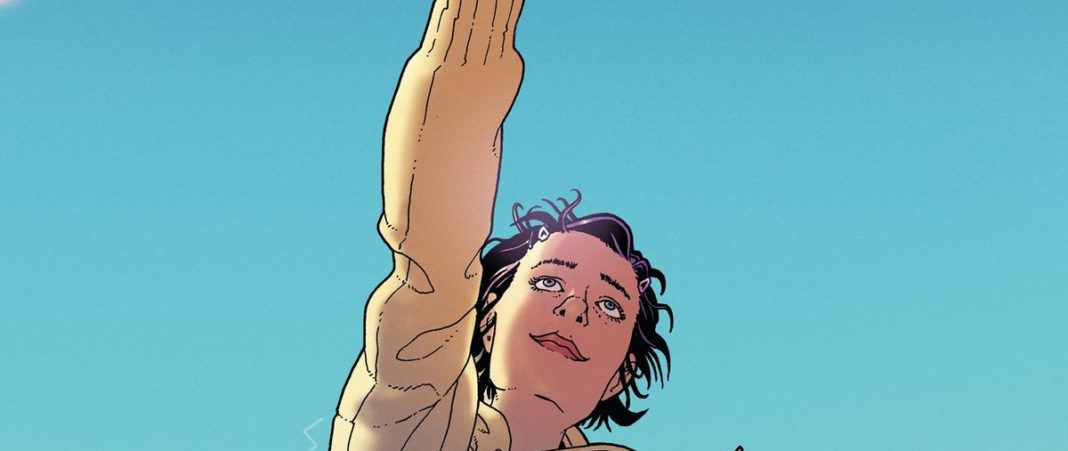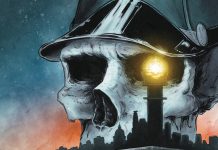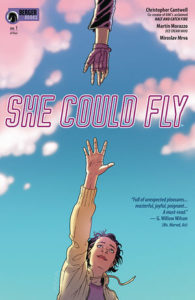
Mental illness in She Could Fly is the thematic connecting tissue and storytelling mechanism that drives the story and it offers no happy endings. But it doesn’t offer bad endings either. It rather prefers to try and understand the mind of its characters and how they negotiate their hold on reality when everything that surrounds them feels so unreliable.
Martin Morazzo’s art for the comic perfectly captures this complex character study by focusing on their humanity while surrounding them with a quasi-realistic world of spies, jetpacks, and violent showdowns. Christopher Cantwell’s script is also expertly grounded but with a sense of building anticipation that later explodes into a mess of probable and improbable stuff that appropriately captures the chaos that mental illness can sometimes bring. And it’s all done respectfully.
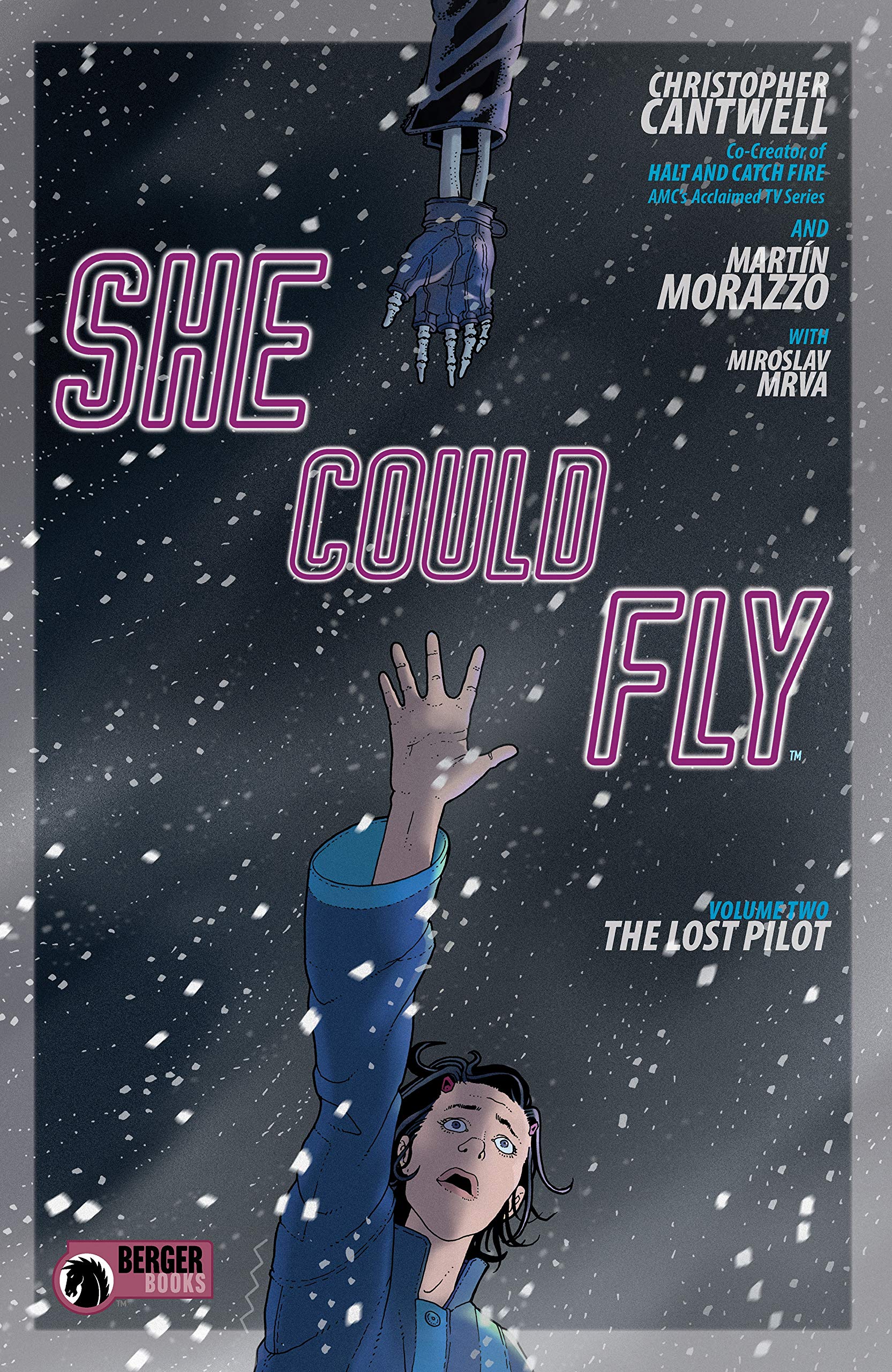
The book just recently wrapped up its second arc and is being developed as a TV show, with the producers behind Halt and Catch Fire and Breaking Bad putting it all together. Cantwell was the showrunner and co-creator of Halt and Catch Fire, which puts him in familiar territory when it comes to the adaptation of the comic. He is currently penning the screenplay for the show’s pilot. Karen Berger of Berger Books is also a producer on the show.
The Beat sat down with Cantwell and Morazzo at NYCC ’19 to talk all things She Could Fly and what’s currently happening with the TV adaptation.
Ricardo Serrano: Your approach to mental illness feels raw but honest in She Could Fly. It’s often been tempting to many to fall back on the whole “crazy girl” idea and just make these characters avatars for pure madness. What did you want to say about mental illness in your book?
Christopher Cantwell: I wanted it to be very grounded. There were parts of the story where we wanted to go more out there, play with comic book conventions, but I wanted everything to feel very real. It’s tied to my own experience and I researched quite a bit for it. I wanted it to be an accurate portrayal. I didn’t want it to be a neat, tied with a bow type of story where everything’s resolved. Volume 2 definitely looks at this and sees it as something that just continues and that it doesn’t get neatly resolved.
Serrano: On the visual side, how did you approach Luna’s design, knowing the typee of character it was and what she represented?
Martin Morazzo: I remember the first sketch I did of Luna went for more of a Tim Burton look, a bit more extreme. Chris wanted something more normal, less assuming. So we went with something that more appropriately captured the vision. I’m glad how it turned out.
Serrano: A tv series based on the comic was announced at SDCC. For the life of me, I don’t even know how you’re going to put all the bizarre stuff that happens in the comic on the screen. What’s the process been like?
Cantwell: It’s not been greenlit yet. We’re developing it still. I’m currently writing the pilot for it and we have some great producers on it, like Karen Berger. It’s a really good team we put together. Right now we’re trying to put everything together in terms of how it’ll look and what we want to bring to it.
Serrano: Has your work on Halt and Catch Fire influenced the writing? Seen any elements migrate between stories?
Cantwell: I think Halt is its own story. When I started She Could Fly I wanted to create something entirely different. Somethings always filter through given it’s still coming from my perspective. The translation from the comic to the pilot script has also been very different, at least in terms of technique and structure and form. Other tools I’ve been more accustomed to using are also coming through in the pilot script. But then there were moments when I expected an amazing illustrated page after writing a page because that’s how the process was with Martin. Whenever that happened I was like ‘this is amazing! And it came from my head.’ It’s different when you’re on a Word document that’s some time away from being produced.
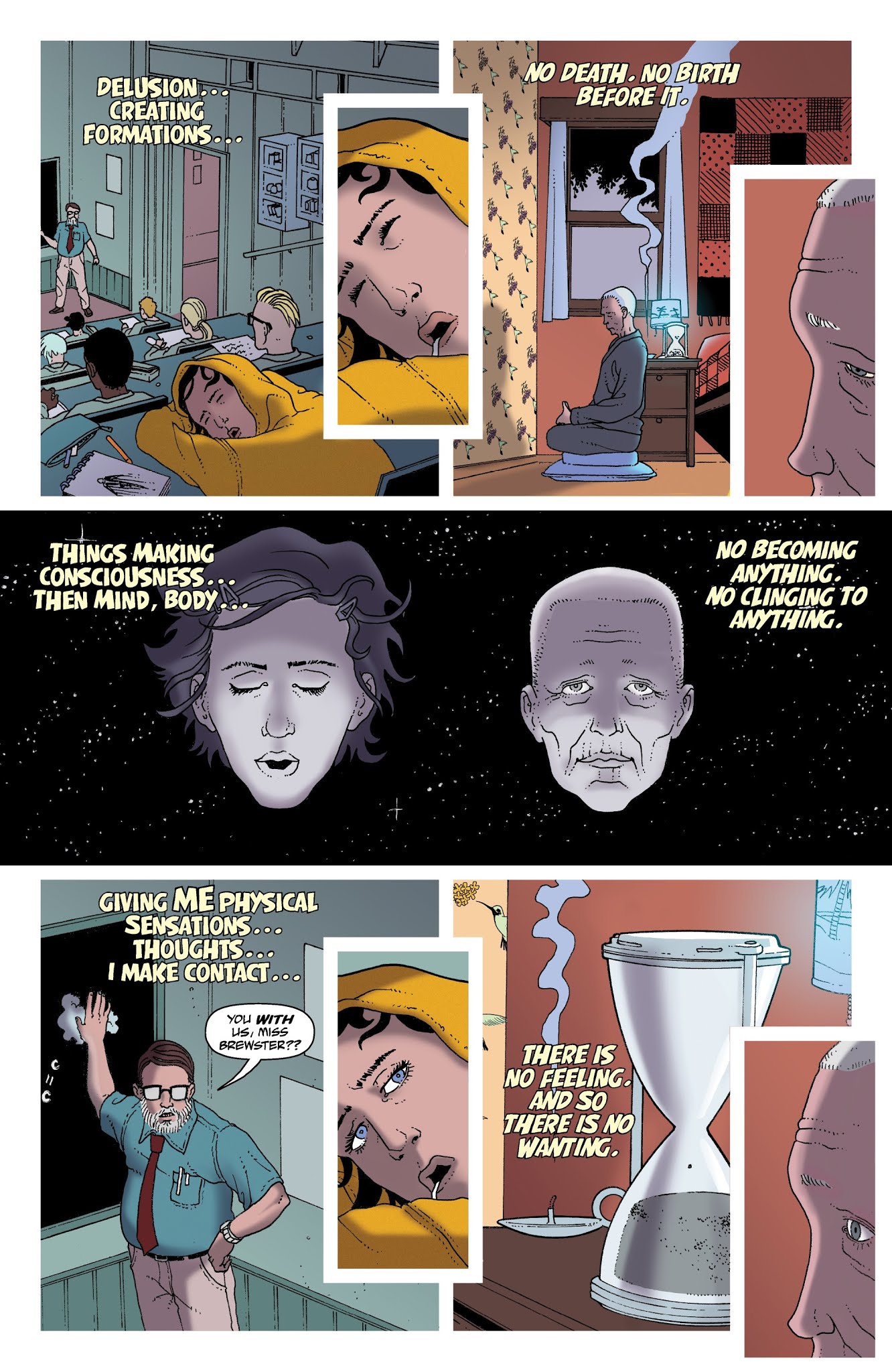
Serrano: One of the things I liked about She Could Fly was that the story was populated by other characters that also play into the mental illness theme, whether by adding or sharing in some of the experiences. How did you think about these characters and what roles they would play in the story?
Cantwell: I wanted to flesh out a cast of character that also had their own undiagnosed issues. The so-called normal folks at play here, the more you know them the more you see their eccentricities come out. It just something’s that’s true for everybody. It’s challenging that idea normal even exists. In terms of what they’re after, I think no one could rely point down what that is, specifically. They’re all after one thing, but at the end of the day it feels ephemeral.
Serrano: What were your influences coming into the book? Anything you looked at in particular to get the feel for the comic just the way you wanted?
Morazzo: For this book, not really. Chris’ script was very detailed and descriptive. I just looked at pictures of Chicago, to make sure I got the setting feeling authentic.
Cantwell: I thought a lot about Donnie Darko, one of my favorite movies. I mean, She Could Fly is like if Donnie Darko were directed by John Hughes. The cast is colorful and the surroundings have this Chicago palette built into it. That was important. I wanted the story not to feel dark visually. The book has this lightness and kind of beauty to it that everyone’s trying to grab, especially Luna.
Serrano: Each of the panels in the series are packed with detail and it really makes you slow down to take it all in. How did you approach this?
Morazzo: Oh, that’s mostly Christopher’s script. He describes things so clearly. Sometimes I get a jacket on the script and when I look it up its just as described in the script. He was very clear. I sometimes lose my mind in Google Street Walk and so decided to go to Elmhurst, where the story takes place to take notes. I found someone really lives at Luna’s house at the moment. So that was interesting. Sometimes I rent a place close to the setting of a book and take pictures. I didn’t do it this time, but it’s part of my process. I try to make every street look and feel like Chicago. I get a bit obsessed with that. I feel that if someone who lives in Chicago sees these places and doesn’t recognize them then you don’t really get into the experience. I remember the movie X-Men: First Class, it had a scene with mountains on it and snow and it said Villa Gesell. Villa Gesell is a beach. The people in the movie theater at Argentina were just laughing at this. I try not to do those things in the comics I work in.
Serrano: Thanks!
Christopher and Martin: Thank you!


